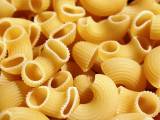Healthy eating without breaking the bank: discover the most economical foods to choose!

In a world where life is becoming increasingly expensive, eating healthily without breaking the bank has become a challenge for many... Fortunately, there are some foods that are both inexpensive, nutritious and easy to prepare. Here's a selection of these "champions" of the shelves to adopt to take care of your health while preserving your budget! :)
1. Pulses and wholemeal starches: essential allies
- Dried vegetables: the must-have vegetable protein
Pulses (lentils, chickpeas, beans, etc.) are the perfect allies for a balanced, economical diet. In addition to being rich in vegetable protein and fiber, they have the advantage of being inexpensive. They can easily replace meat in your dishes, while providing essential nutrients. Choose them two or three times a week for a varied, healthy diet.
Tip: Lentils and split peas don't require prior soaking, which saves you time in the kitchen.
- Wholemeal starches: an economical and nutritious choice
Wholegrain rice, wholegrain pasta and semolina are not only inexpensive, but also highly nutritious. These starches are richer in fiber than their refined versions, and offer greater satiety. Eat them at least once a day to maintain a balanced intake of complex carbohydrates.
2. Seasonal fruit and vegetables: cheaper and better for the planet
- The importance of eating in season
Fruits and vegetables in season are generally cheaper and of better quality. Take advantage of fresh produce grown locally, as it uses less energy to produce and transport, which is also good for the planet.
- Examples of fruits and vegetables in season:
- Spring (March to May): Strawberries, rhubarb, kiwi, apples (end of season), citrus (end of season), asparagus, artichokes, new carrots, spinach, radishes, spring onions, peas.
- Summer (June to August): Cherries, raspberries, apricots, peaches, melons, watermelons, plums, tomatoes, zucchini, eggplant, cucumbers, peppers, green beans, corn.
- Autumn (September to November): Apples, pears, grapes, quinces, figs, persimmons, chestnuts, pumpkin, squash, cabbage, carrots, celery, turnips, beet, leeks.
- Winter (December to February): Citrus fruits, kiwis, apples (winter), pears (winter), pomegranates, chestnuts, cabbages, leeks, endives, carrots, potatoes, turnips, celeriac.
Tip: Buying "ugly" vegetables (less well graded but just as good) saves money and reduces food waste.
3. Dairy products: economic classics
Milk, cream cheese and plain yoghurt are affordable, nutritious dairy products. They provide calcium and protein at low cost. To avoid excess sugar, prefer plain versions and add fresh fruit or compote for a natural sweet taste.
Tip: Vary your dairy products so you don't get bored and benefit from different sources of nutrients.
4. Canned fish and eggs: affordable sources of protein
- Eggs: a low-cost protein
Eggs are an excellent source of protein and essential amino acids. Inexpensive and versatile, they can be cooked in a thousand different ways: scrambled eggs, omelettes, poached eggs, etc.
- Canned fish: practical and economical
Canned fish such as tuna, sardines or mackerel are an ideal option for incorporating essential fatty acids and proteins into your diet, without spending too much.
5. Rapeseed oil: good value for money
Rich in omega-3 and vitamin E, rapeseed oil is a healthy, economical fat. Used in small quantities, it's perfect for seasoning dishes or cooking vegetables and pasta. It's one of the most affordable oils on the market, while still being good for your health.
A few tips for saving money while eating healthily
- Buy in bulk: Some products, such as pulses, rice or pasta, keep well, so buying in large quantities can save you money in the long run.
- Cook at home: Preparing your own meals is always more economical than buying ready-made meals, which are often expensive and less healthy.
- Look out for promotions: Take advantage of discounts on fresh produce at the end of the market or supermarket promotions to save on your shopping.
In a nutshell
By combining economical foods, simple cooking tips and good planning, it's perfectly possible to eat healthily without breaking the bank. So grab your pans and your shopping lists - balance is within reach! :)
You may be interested in:
 Adèle Peyches
Adèle Peyches


Comments